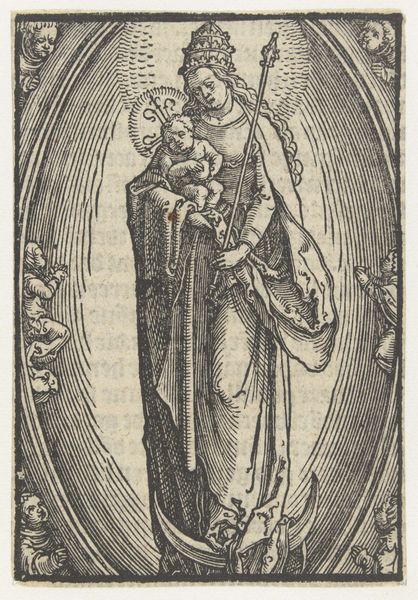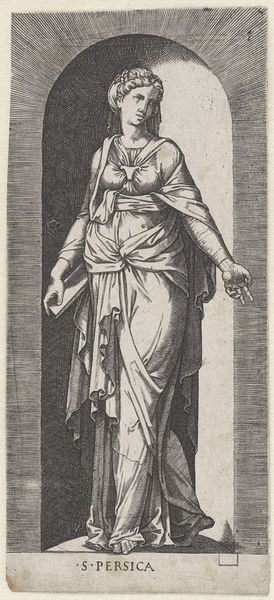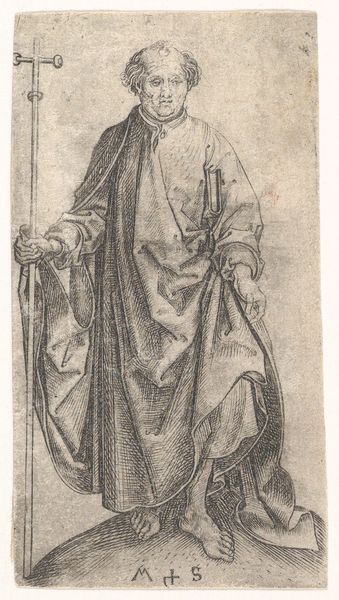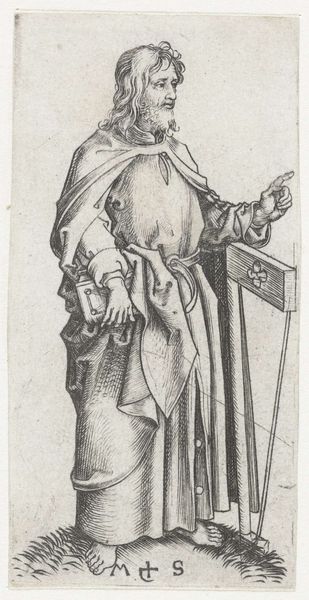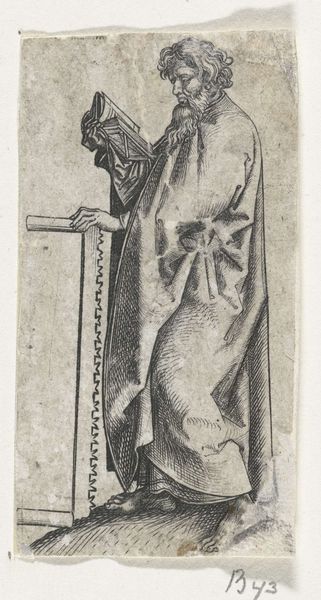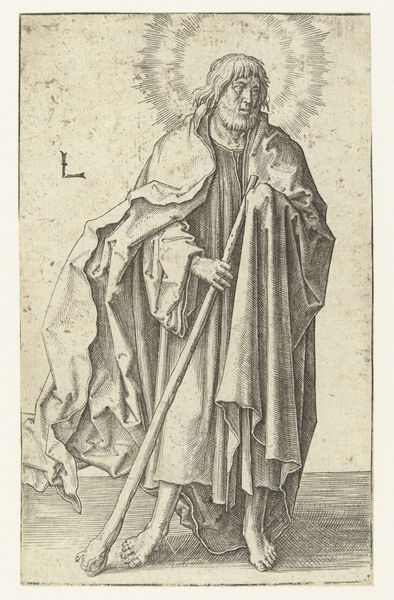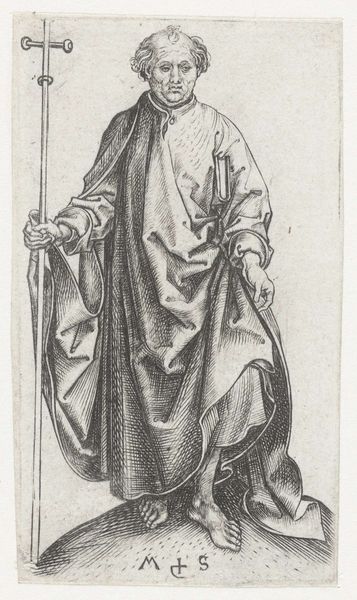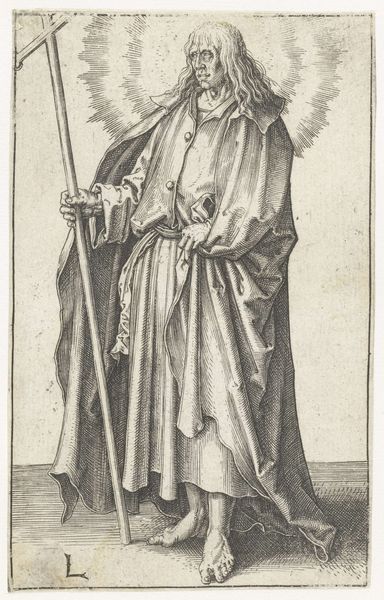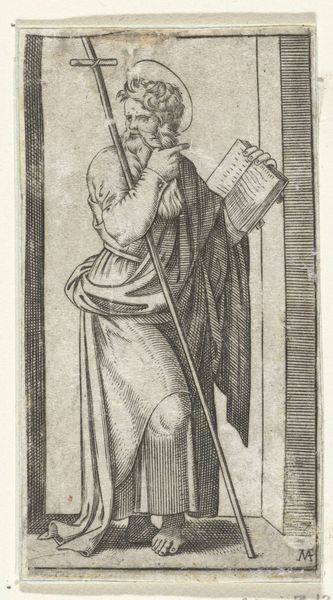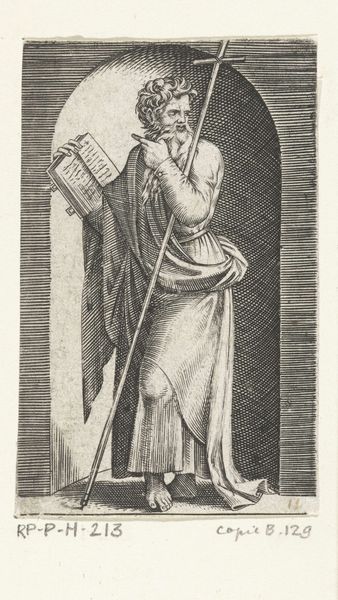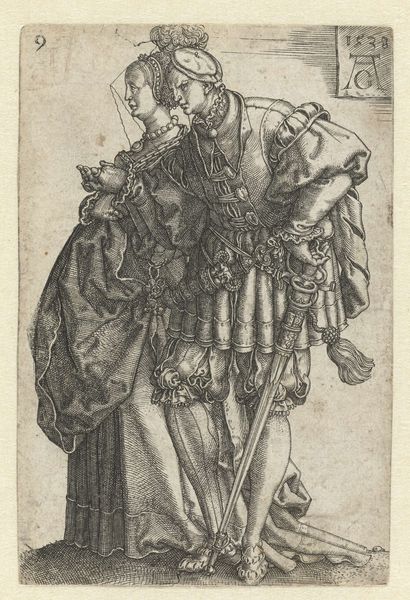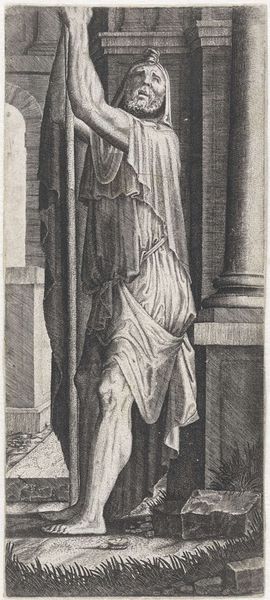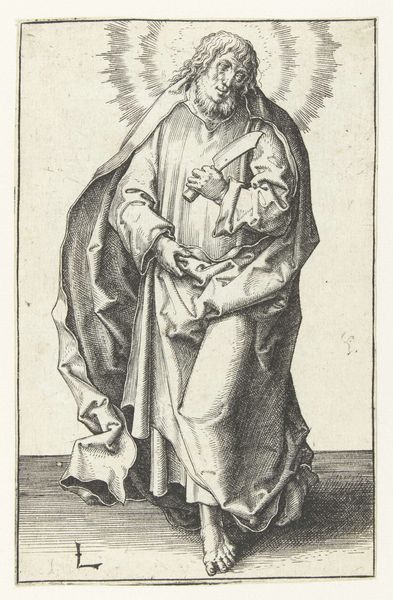
print, engraving
#
portrait
# print
#
figuration
#
northern-renaissance
#
engraving
Dimensions: height 144 mm, width 62 mm
Copyright: Rijks Museum: Open Domain
Editor: This is Martin Schongauer's engraving "Johannes de Doper", from around 1470-1491. It strikes me how the fine lines create such detail. What catches your eye, considering its historical context? Curator: The fascinating thing here is to examine how printmaking elevates and disseminates imagery. Religious icons were typically available for a wealthy elite, but Schongauer’s prints offered these figures to a much wider audience. Notice the Lamb of God he holds, its radiant halo and gesture: It served to communicate complex theological ideas simply, cheaply, and repeatedly to a large public audience eager to engage with the ideas of the Church. Editor: So, prints democratized religious art? Curator: Precisely! Before printmaking, art and devotion were largely contained to cathedrals, elite chapels, and illuminated books. This piece helps us understand how these portable images start appearing everywhere, informing religious, cultural, and political viewpoints throughout society. Did the commercialization have other impacts on religious interpretation, too? Editor: That’s a good point! By offering many versions of this John the Baptist image, perhaps there was more room for personal interpretation, or even questioning of authority figures. Curator: Yes, and that really shaped how individuals then experienced and thought about their faith! I suppose my perception of art has been greatly changed after our talk.
Comments
No comments
Be the first to comment and join the conversation on the ultimate creative platform.
